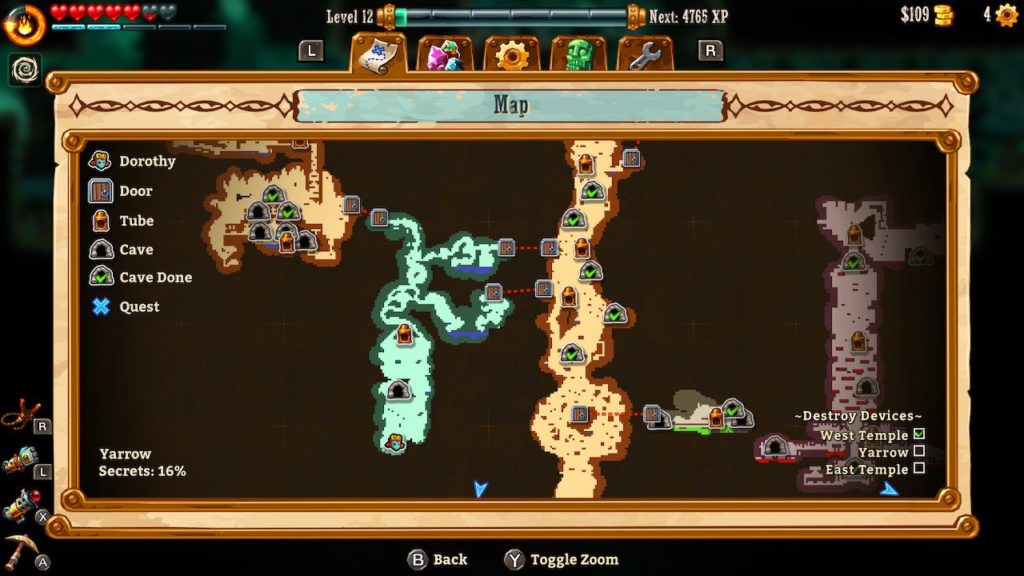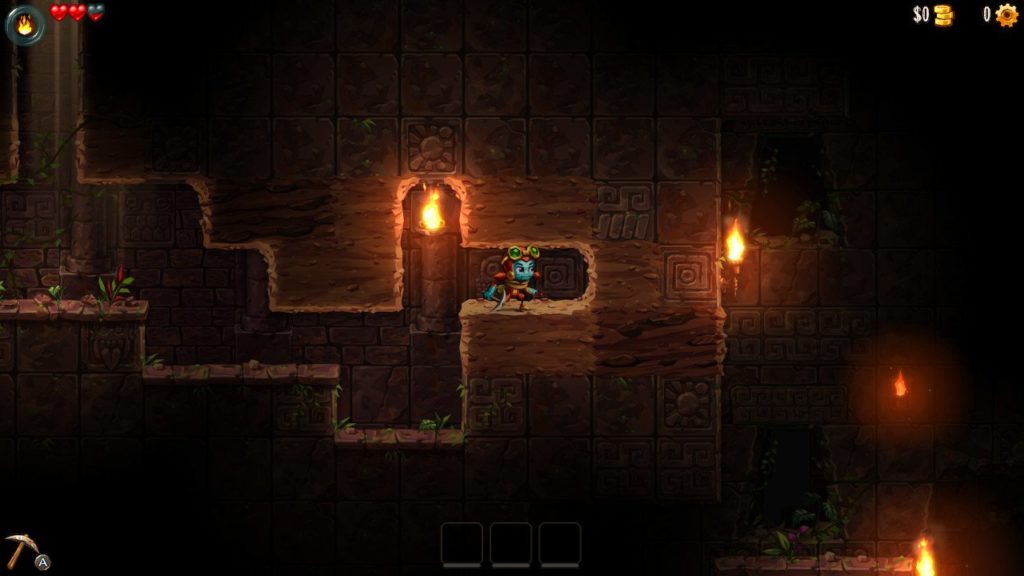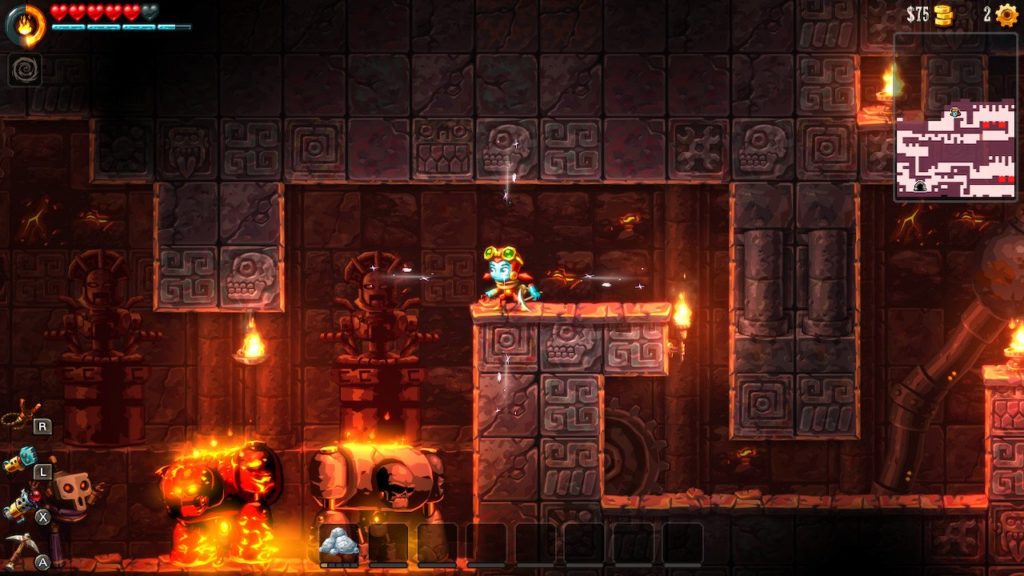More Info from The Station / Thunderful
- Genre: City Builder
- Platform: PS5
- Also Available On: Steam, PS4, Xbox One, Xbox Series, Switch
I know it may seem weird to play a city builder on console and I can’t say I really disagree. However, one of the things that I’ve been poking around with as UE5 R&D is a set of gameplay systems around top-down grid-based gameplay, so this kind of fit the bill as something I should at least give a look. What this turned out to be was a wonderfully compact city builder that may be a bit on the simple side, but also made sure it was complete before it wore out its welcome.
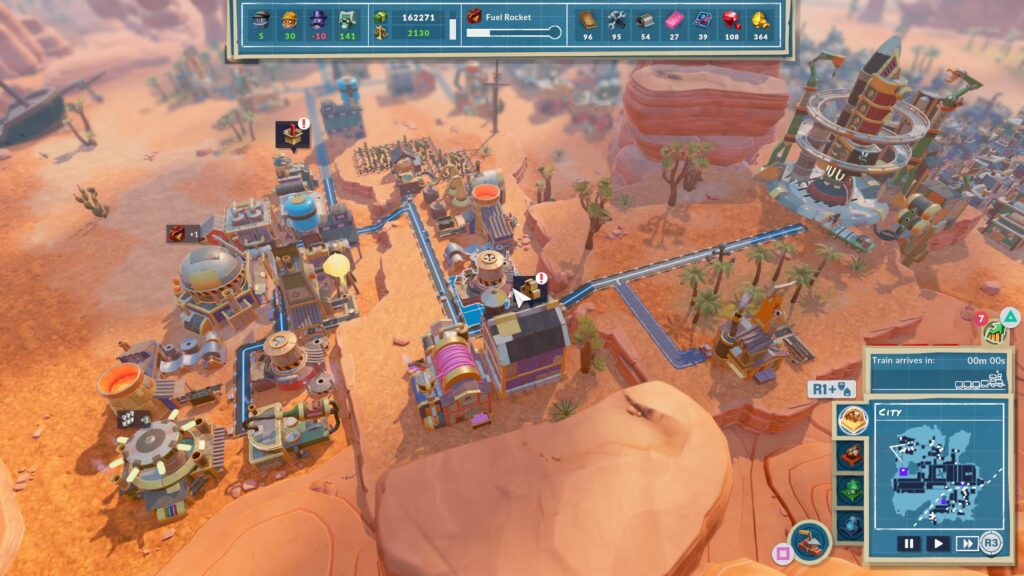
This has all the pieces to make a fun city builder, but admittedly the city building is the part that I probably spent the least time in. It has some interest in that housing is upgradeable. You go from workers to engineers to aristocrats to scientists in tiers, and each one is its own class of employee for specific buildings. However, it’s all simple. You kind of just do it in order. You have a ton of different building types that generate different resources that leads up to the final resource to shoot a rocket into space. But again, it’s all simple. You place them down, location isn’t really important, and they are all necessary to get to the end game. You again kind of just do it in order.
The real interest of the game for me was the mining section. This isn’t really all that different from the city building in that you’re placing down workers and buildings to achieve a goal but it feels much more nuanced in a positive way. For one thing, placement does end up mattering.
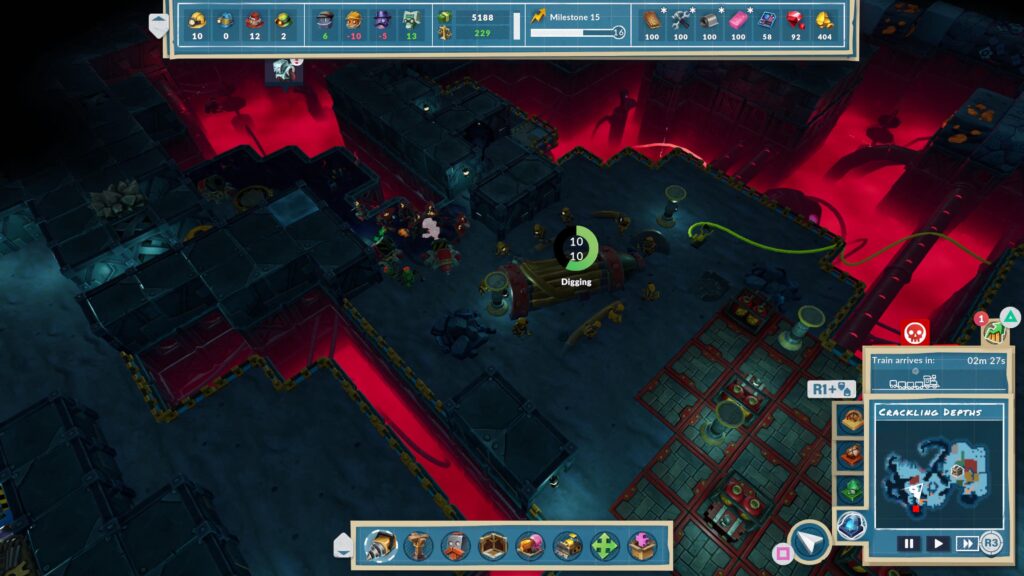
This is a bit of a long-term change over a play session, but placement of where you put things changes pretty drastically over the course of a play through. At first you’re placing down workers wherever they fit and making it work. They all mine manually, they collect resources manually, and you push through. By the second mine level you start getting enemies, so now placement of defenses matters. The ultimate goal is to be efficient with your outgoing money, so catching as many enemies as possible with weapons means fewer costs to defense bots and a better run city. You also get access to conveyor belts at this level. This allowed me to basically automate resource gathering, but with the caveat that conveyors cannot run through pillars supporting the mine ceilings or camps supporting the workers. Again, placement gets more important as does the general efficiency of building the conveyors. By the third mine level you earn teleporters, which now had me min-maxing where I’m placing camps. Camps were far away from resources with a teleport network connecting important spots, then conveyors linked resources automatically to the surface. Maxing the resource gathering let me maximize trading, allowing me to then maximize money generation.
Admittedly part of the interest here is also that you are to some extent directly manipulating your citizens. You’re sending your miners or prospectors or defense robots to the locations that you want them to be investigating. It’s again pretty simple, but even that small bit of interaction is a lot to add some variety and direct presence to how you’re interacting with the game.
The mine section of the game is where I got it. I just wish there was more tying this to the surface game. I want the surface gameplay to make me also efficiently move resources out of the mine and to both workplaces and housing that need them. Right now it’s just kind of too simple. There’s technically resource movers from warehouses to work sites, but the layer of mine to warehouses is automatic. This level brings to mind possibilities from games like Pharaoh or Timberborn where efficient movement of goods isn’t just there but is crucial to a well run city, and I think this is where the general gameplay has the most chance of growth in a sequel.
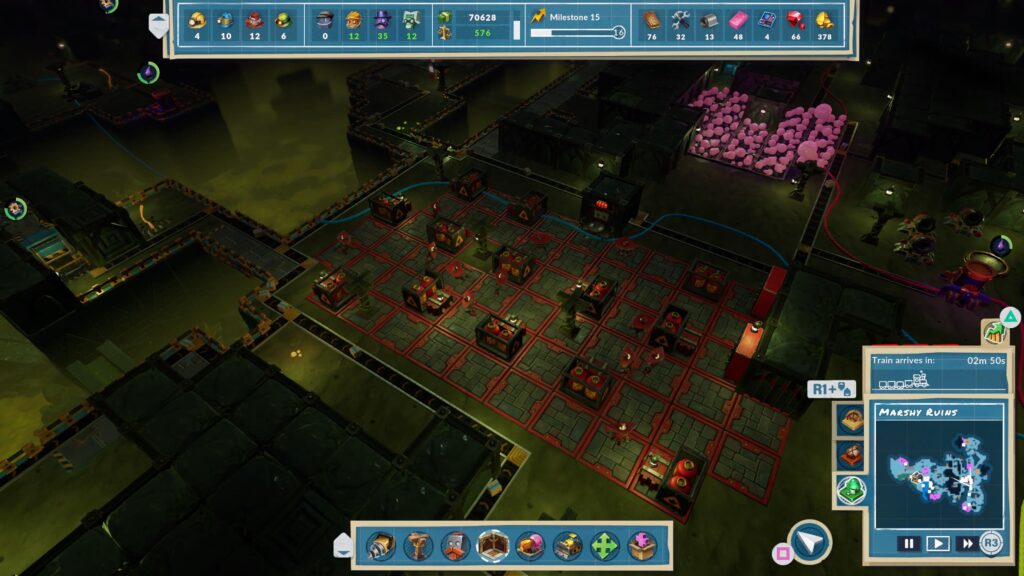
However, the main reason I was playing was to check out the gamepad integration and this was surprisingly elegant and far more useable than I imagined a game of this type would be. There’s basically two places you can be interacting with at any time – build menus or the world. You switch between them with the press of a button, which served as a really consistent and clean way in both the city and mine segments to quickly change your mindset. This is helped by the build UI going away when you’re in city mode to reinforce the change.
The other thing that surprised me in its simplicity was that they just totally did away with a virtual mouse cursor when interacting with the city. You are just locked to the center of the screen, and whatever is there is what you can select. I honestly expected this to be really restricting, but it generally just worked. There’s definitely some oddities around the edge of cells where you can get stuck quickly swapping between adjacent cells, but the game largely just worked well with screen center selection. I suspect that this is a combination of buildings generally being large in screen, but you can scroll around the world visually pretty quickly and lock in one what you need easily so it easily exceeded my expectations.
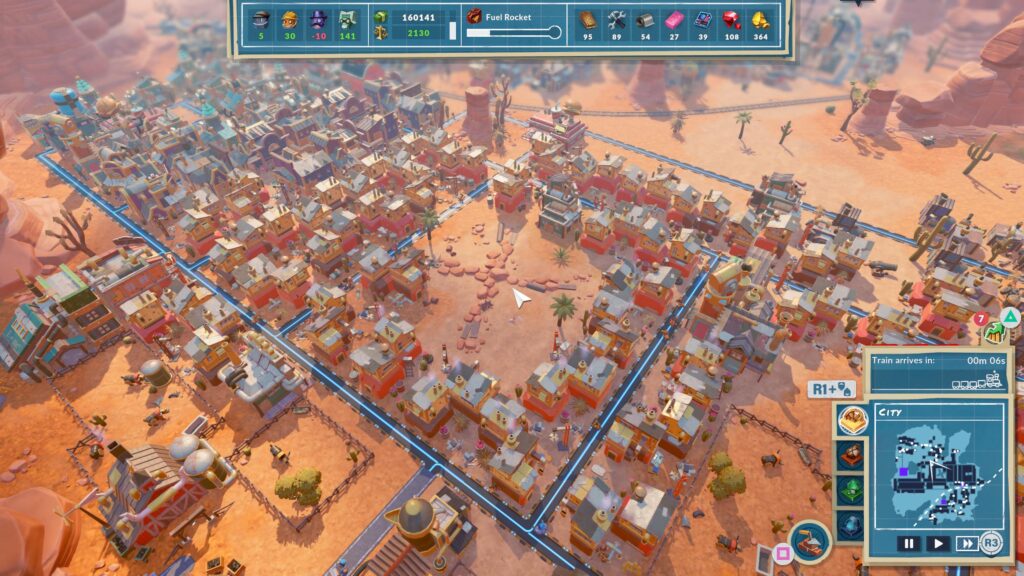
It’s not necessarily what they appear to have been going for but there’s definitely a good city builder within the mechanics of this game. It just needs to have a bit more breadth to everything. Resource gathering needs to be less easy to just max out while resource movement needs to be more important. Building new things need to be a more impactful decision making moment instead of just build in order. The location of housing relative to goods could stand to be more important. Growth through worker types could stand to be a little less rigid – instead of requiring everything, let it be some combination of a list of things with the player steering the direction of city growth. Maps could have resource restrictions, allowing for the trade system to have more importance. Mechanically the pieces are all there for a sequel to push further into the genre, rather than being what feels like a starter entry to the genre.


